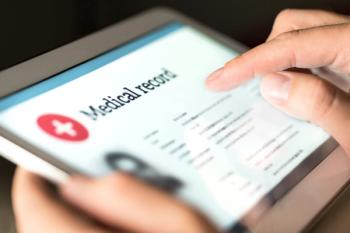
Do You Have a Digital Health Plan for Your Pharmacy?
The steady beat of technological advancements has significantly increased the level of reliance on innovative digital services in the daily lives of modern consumers. With the proliferation of smartphones, consumers can now spend their time online shopping, requesting a ride, finding a date and changing the temperature in their home, all with the swipe of a finger. It comes as no surprise, then, that consumers are clamoring for similar services for their health.
Although the specific definition of digital health is in flux, the Food and Drug Administration (FDA) has identified technologies that “reduce inefficiencies, improve access (to care), reduce costs, increase quality, and make medicine more personalized for patients” as falling under the umbrella of digital health. These include areas such as wireless medical devices, mobile medical apps, health information technology, telemedicine, general wellness and software as a medical device.1 The FDA is still struggling to rein in the tech space with multiple startups that have flushed the market with products that promise to help improve medical outcomes. The fact of the matter is that the current landscape is in its infancy, and literature, including medical guidelines and clinical trials, supporting general adoption is still making its way to the forefront.
Nonetheless, we are seeing organizations such as the American Medical Association (AMA) encouraging their members to use digital health in their daily practice. In late 2018, the AMA put out its Digital Health Implementation Playbook, which aims to be a living document that helps physicians identify how to use technology in their daily practice.2 The first iteration focused on remote patient monitoring (RPM), in part because of several recent changes to the Centers for Medicare & Medicaid Services’ current procedural technology codes for RPM.3 It is highly advisable for those in the pharmacy space looking to integrate technology into their patient services to give this playbook a read. The topics it covers are essential for the identification of a problem to be solved, necessary training for staff, integration into workflow and best practices for finding quality vendors and monitoring endpoints. Some of the worksheets included may be a good jumping-off point without having to start from scratch or bring in an outside company.
Taking this into consideration, the use of digital health services and products in the community pharmacy space currently leaves a lot to be desired. Although many companies are creating products that may fit into a provider’s electronic health records platform, most pharmacies use a pharmacy management system that is product oriented and not tied to management of patients’ chronic diseases, thus making the integration of technology services difficult at this time. However, it may be a matter of time before manufacturers of such systems start partnering with other companies to more easily build data interoperability. In any event, there are several low-hanging technological fruits community pharmacies can target to expand clinical services in their local area.
There are several companies on the market that have created platforms aimed at better enabling pharmacy services, such as Digital Pharmacist and PrescribeWellness. These companies explore different solutions to empower their pharmacies to serve customers better, whether through enhanced medication therapy management, chronic disease management services, medication reviews or even virtual communication through platforms compliant with the Health Insurance Portability and Accountability Act. These services are at the cusp of helping pharmacies transition into the 21st century, when integrating technology into services is expected by any consumer.4,5
One of the focal points of digital health is medication adherence. This has included programs that a pharmacy can use to send text messages and calls or other automated communication tools that remind patients to pick up their medication. Although this is a valuable service and may help increase revenue for a pharmacy to maximize product rollout, there are other options to consider. Many pharmacies are in the process of, or have transitioned to, expanding the availability of compliance packaging for their patients (for example, blister or strip packaging).
There are additional ways to integrate these services into a clinical monitoring service. Multiple pill bottles and smart pillboxes have hit the market, enabling data tracking of when patients take their medication. For example, several community pharmacies will package medications in blister packs meant to fit into a smart pill tray. A pharmacy can then monitor when patients open the medicine and track whether they are missing their therapy.
Family members of many patients may be inclined to enroll the patients in a service like this to help facilitate more accessible means of organizing drug therapy, thereby giving them a sense of control with the pharmacy taking over adherence monitoring. Pharmacies have rolled this service out differently, with some providing a smart pill tray for a fee or subscription and including the monitoring service.
However, smart pill trays are increasingly being supplanted by new smart dispensers entering the market, such as robots that basically combine an Amazon Alexa and a pill dispenser. These fascinating devices allow the patient to ask for health information and track their health through integration with other technologies, such as Bluetooth-enabled blood pressure and blood glucose devices and wearable fitness trackers.
An additional strategy is to serve as a virtual pharmacy for certain manufacturers of smart pill dispensers entering the market, opening up a larger market for filling medications for patients. Some of these new devices have a built-in camera to allow virtual conversations with the pharmacy, which opens up the next new avenue in digital health: teleservices.
Aside from medication adherence, other topic areas that have generated some buzz include the use of wellness programs for patients. These are being further empowered by new technology services that can serve as adjunctive tools for patient management, including cheaper genomic assessment programs, the use of wearable devices and online data analytic programs.
These enable a pharmacist to provide a more personalized approach to patient care, in part because of a multitude of data points that are able to be generated and analyzed. This is indeed likely to expand into the RPM space, as seen with the Apple Watch, which can record an electrocardiogram and monitor for atrial fibrillation, as well as the Omron wearable, which can measure blood pressure, and other devices that allow for continuous glucose monitoring, all tied with exercise and sleep data. Using all these data points, pharmacies may be better able to leverage medication therapy management services as well as tailor patient-specific actions such as diet and exercise plans to better manage health habits. These types of interventions will see a proliferation in the pharmacy space over the next few years. Even now, we are seeing some pilots creep up across the United States, from CVS Health and Walgreens, for example. Currently, CVS Health is piloting its HealthHUB in three locations in Texas, while Walgreens is experimenting with teleservices and kiosks for health products in its stores. Recent surveys have demonstrated that by and large, pharmacists are interested in using novel technological services for their patients and acknowledge that their customers want it.6,7 For independents and community chain drugstores, a digital plan is critical to keep up with the competition and engage with patients who have a digital consumer mentality that will surely not go away anytime soon.
ABOUT THE AUTHORS
Timothy Dy Aungst, Pharm.D., is an associate professor of pharmacy practice at the Massachusetts College of Pharmacy and Health Sciences (MCPHS) and a clinical pharmacist at Century Homecare, both in Worcester.
Nurisha Gobin is a 2020 Pharm.D. candidate at MCPHS. Rosa Jung is a 2020 Pharm.D. candidate at MCPHS.
References
- United States Food and Drug Administration. Digital Health. Available at
https://www.fda.gov/MedicalDevices/DigitalHealth/ - American Medical Association. Digital Health Implementation Playbook. Available at
https://www.ama-assn.org/amaone/ama-digital-health-implementation-playbook - mHealth Intelligence. CMS to reimburse providers for remote patient monitoring services. November 2, 2018. Available at
https://mhealthintelligence.com/news/cms-to-reimburse-providers-for-remote-patient-monitoring-services - Spiro S. Digital transformation of pharmacists' clinical services. J Am Pharm Assoc (2003). 2018; published online November 16, 2018.
- Martin A, Brummond P, Vlasimsky T, et al. The Evolving Frontier of Digital Health: Opportunities for Pharmacists on the Horizon. Hosp Pharm. 2018;53(1):7-11.
- Crilly P, Hassanali W, Khanna G, et al. Community pharmacist perceptions of their role and the use of social media and mobile health applications as tools in public health. Res Social Adm Pharm. 2019;15(1):23-30.
- Crilly P, Jair S, Mahmood Z, et al. Public views of different sources of health advice: pharmacists, social media and mobile health applications. Int J Pharm Pract. 2019;27(1):88-95.v
Newsletter
Pharmacy practice is always changing. Stay ahead of the curve with the Drug Topics newsletter and get the latest drug information, industry trends, and patient care tips.















































































































